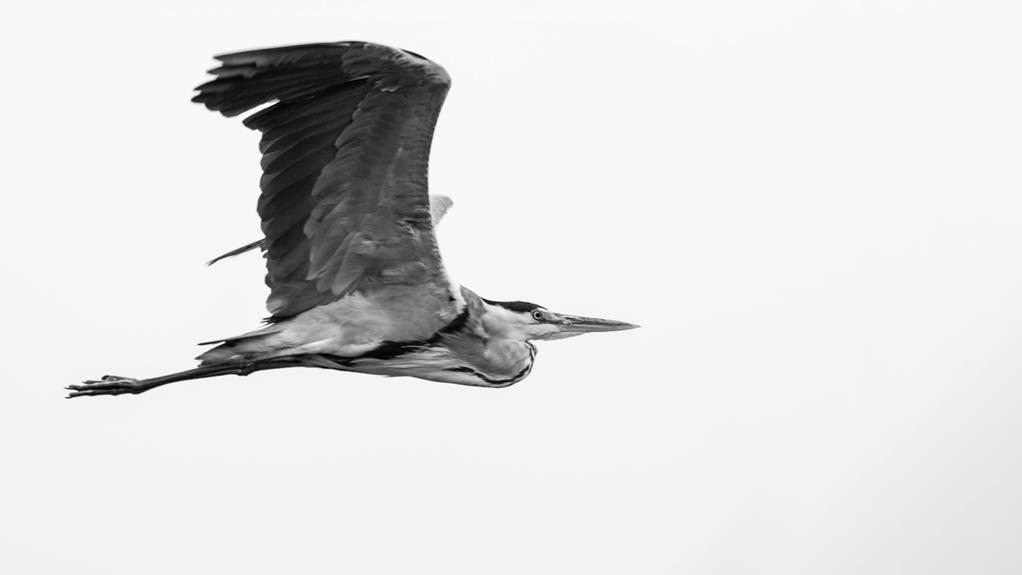Neck pain after flights primarily results from poor posture, tight seating, and improper handling of luggage. Uncomfortable sleep positions and prolonged sitting strain neck muscles, worsening pain. Cabin pressure and dry air can cause muscle cramps. Using travel pillows, practicing proper lifting techniques, and maintaining neutral neck posture reduce discomfort. Persistent severe pain requires medical consultation. Effective mitigation includes selecting appropriate pillows and adopting beneficial travel habits.
Understanding Post-Flight Neck Pain
Many travelers experience varying degrees of post-flight neck pain due to improper sleeping positions and luggage handling. Inadequate space often forces passengers into uncomfortable sleeping positions, straining neck muscles and causing pain. To mitigate this, maintaining a neutral neck position with the support of travel pillows is crucial. Additionally, incorrect luggage handling, such as lifting heavy bags or uneven weight distribution across shoulders, contributes to neck strain. Proper lifting techniques and balanced weight distribution are essential to prevent this issue.
Anatomy of Neck Pain
The cervical spine, comprising seven vertebrae cushioned by discs, supports the head and facilitates movement. Encasing the spinal cord, these vertebrae transmit nerve signals essential for body function. Neck muscles and ligaments stabilize and mobilize, making the neck susceptible to pain from tissue abnormalities or injuries during prolonged travel. Understanding this anatomy and pain mechanisms is crucial for managing travel-related neck discomfort.
Common Causes of Travel-Related Discomfort
Travel discomfort often stems from poor posture, limited movement, stress, and improper luggage handling. Airline seat constraints exacerbate neck muscle tension and stiffness. Prolonged immobility during flights restricts stretching, enhancing neck pain. Travel stress, including rushing and delays, increases neck and shoulder muscle tension. Incorrectly lifting heavy luggage or uneven load carrying strains neck muscles. Luggage design and weight distribution also impact neck comfort. Unsupportive sleeping positions during travel cause neck strain; inadequate airline pillows contribute to this issue.
The Impact of Poor Posture
Poor posture during long-haul flights significantly impacts neck pain due to cramped seating that forces bad spinal alignment. This misalignment stresses neck muscles, causing pain. Improper sleeping positions and soft pillows exacerbate this by not supporting the spine's natural curve, leading to increased post-flight neck discomfort. Understanding body mechanics and improving posture can reduce travel-related neck pain, enhancing overall travel experience.
How Flight Conditions Contribute to Pain
Poor posture, cabin conditions exacerbate passenger neck pain. Dry air causes dehydration, leading to muscle cramps and increased neck discomfort, especially during long-haul flights. Pressurized cabins induce muscle tension and swelling, intensifying pain in those with musculoskeletal issues. Cramped seats and limited movement force passengers into prolonged awkward positions, exacerbating neck stress and stiffness from aircraft vibrations.
The Role of Stress and Anxiety
Stress and anxiety exacerbate flight-related neck pain by increasing muscle tension and inflammation. Techniques such as deep breathing, guided visualization, and progressive muscle relaxation can mitigate these psychological factors, reducing neck discomfort post-flight. Understanding the link between psychological stressors and physical discomfort can clarify the causes of post-flight neck pain.
Preventive Measures Before Flying
To minimize neck pain risks during flights, select ergonomic seats, engage in periodic stretching, and use neck supports. These strategies help alleviate discomfort effectively.
Optimal Flight Seat Selection
Selecting the optimal flight seat minimizes post-flight neck pain. Seat ergonomics, crucial for comfort, involves choosing seats with headrests that match the natural neck curve, enhancing support during sleep. Reclining seats help maintain a relaxed posture, decreasing neck muscle strain. Aisle seats offer positional flexibility, increasing comfort, whereas window seats support the head when sleeping. Premium seats in business or first-class feature superior ergonomics. Alternatively, exit row or bulkhead seats provide extra legroom, promoting better posture.
Importance of Regular Movement
Regular movement prior to flights reduces neck pain risk. Techniques like muscle relaxation and reduced screen time enhance this effect.
Key Points:
- Regular movement boosts circulation, lessens muscle tension.
- Muscle relaxation techniques improve blood flow, reduce neck tension.
- Reducing screen time limits forward-head posture, decreases neck strain.
Essential Neck Support Accessories
Neck support accessories, such as cervical collars and travel pillows, enhance comfort and prevent pain during flights. Cervical collars maintain the cervical spine's natural curve, reducing muscle strain and misalignment risks. Travel pillows, available in memory foam, inflatable, and microbead types, support the neck ergonomically. Additionally, in-flight neck rotations and shoulder shrugs every hour relieve tension, boost circulation, and prevent stiffness, serving as essential preventive measures against neck discomfort.
Exercises to Alleviate Neck Strain
To alleviate post-flight neck discomfort, we explore exercises that specifically target neck strain. Firstly, we discuss the link between air travel and neck pain. Next, we detail effective exercises to mitigate such discomfort. Finally, we offer strategies for maintaining neck health after exercising, ensuring a comprehensive approach to this widespread issue.
Understanding Flight-related Neck Pain
Flight-related neck pain primarily stems from prolonged, uncomfortable sitting, inadequate head support, and travel stress.
Sleeping with poor head support during flights can strain neck muscles, as they work harder to stabilize the head, often worsening pain post-flight.
Neck massages during flights relax muscles, enhance blood circulation, and reduce stress, effectively easing neck strain.
Key aspects for managing flight-related neck pain include:
- Ensuring proper head and neck support during flights.
- Evaluating sleep positions to minimize neck strain.
- Utilizing neck massages to alleviate pain.
These strategies help formulate targeted exercises to reduce neck discomfort from flying.
Effective Neck Strain Exercises
Effective neck strain exercises include gentle stretches and self-massages that enhance flexibility and strength. Tilting the head in various directions relaxes muscles, improves mobility, and reduces strain. Regular self-massage at the neck's back boosts blood flow and relieves tension. Proper sleeping positions, maintaining neutral spine alignment, and using supportive pillows also mitigate neck pain. Consult healthcare professionals before beginning exercises, especially if experiencing severe pain or underlying conditions, to ensure safety and effectiveness in managing flight-related neck strain.
Maintaining Post-Exercise Neck Health
Post-neck exercise health maintenance is crucial to extend the benefits of increased flexibility, reduced tension, and improved posture, thereby preventing neck strain recurrence. Implement these strategies:
- Regular Neck Stretches: Daily neck stretches enhance muscle flexibility and strength, minimizing strain risks.
- Balanced Diet and Hydration: Consuming calcium and vitamin D-rich foods supports bone health, essential for neck vertebrae. Adequate hydration maintains intervertebral disc health.
- Exploring Acupuncture: Recognized for its pain management and healing properties, acupuncture serves as an effective complementary therapy.
Importance of Hydration and Nutrition
Hydration and nutrition are crucial for preventing neck pain during flights. Adequate hydration maintains fluid balance and muscle function, reducing the risk of muscle cramps and neck discomfort. Balanced nutrition supports overall health and muscle integrity, with key nutrients like calcium, magnesium, and vitamin D preventing muscle tension and spasms. Therefore, maintaining optimal hydration and nutrition is essential for avoiding neck pain associated with air travel.
Choosing the Right Travel Pillow
Selecting an appropriate travel pillow minimizes neck pain risk post-flight. Key considerations involve exploring different pillow types, emphasizing memory foam advantages. Ensuring correct fit tailored to individual physiological needs is essential for optimal comfort and support during travel.
Understanding Different Pillow Types
Exploring travel pillow types enhances journey comfort and may decrease neck pain post-flight. Key considerations include pillow materials and shape.
- Pillow Materials: Material choice affects comfort and durability. Common materials are polyester, microbeads, and down. Polyester, lightweight and affordable, offers less neck support. Microbead pillows conform to neck shape but are bulky. Down pillows, soft and compressible, may be expensive and allergenic.
- Pillow Shape: Pillow shape impacts neck and head support. U-shaped pillows support the neck but lack lateral support. J-pillows provide side support but are bulky.
- Additional Considerations: Size, portability, and maintenance are important in travel pillow selection.
Benefits of Memory Foam
Memory foam travel pillows offer unmatched comfort and support, molding precisely to individual neck and head contours, which alleviates neck pain post-flight. The material's resilience ensures lasting shape and functionality, enhancing durability and providing value across numerous journeys. Additionally, memory foam's hypoallergenic properties minimize allergen exposure, crucial for travelers with allergies or respiratory sensitivities. These attributes make memory foam an ideal choice for enhancing travel comfort, durability, and health.
Selecting the Perfect Fit
To ensure the selection of an optimal travel pillow, consider these key factors:
- Material: Opt for memory foam, which molds to the neck, enhancing support and durability.
- Shape: Choose a U-shaped pillow to maintain neck alignment and prevent discomfort during flights.
- Size: Select a compact pillow that aligns with airplane seat ergonomics and is easy to carry, ensuring practicality and comfort.
When to Seek Medical Attention
Severe neck pain post-flight may signal serious health issues needing urgent care. Common symptoms include sudden severe headaches, limb movement difficulty, balance and coordination problems, and speech or vision troubles, potentially indicating a stroke or neurological disorders.
Persistent severe pain unrelieved by over-the-counter medications or worsening over time also necessitates professional assessment, possibly requiring prescription treatment.
Additionally, neck pain coupled with fever, weight loss, or unexplained systemic symptoms could suggest infections or malignancies, demanding immediate medical intervention.
Long-Term Strategies for Pain-Free Travel
To ensure long-term comfortable, pain-free travel, adopt these strategies:
- Physical Care: Engage in regular exercise targeting neck and back muscles to mitigate flight-related neck pain. Utilize travel pillows and maintain proper posture during flights.
- Mental Wellness: Use in-flight meditation to manage stress, enhancing tranquility. Employ travel-specific meditation apps.
- Financial Planning: Invest in travel insurance to cover medical expenses for conditions like neck pain, reducing financial stress and enhancing overall well-being.
Frequently Asked Questions
Can Sleeping During a Flight Exacerbate Neck Pain?
Yes, sleeping during a flight can worsen neck pain without appropriate support. Travel pillows offer essential support. Neck exercises pre-flight and in-flight mitigate discomfort.
Are Certain Airline Seats Better for Preventing Neck Pain?
Yes, ergonomically designed seats with adjustable headrests enhance neck support, reducing discomfort. Travel pillows further augment comfort, preventing neck pain during flights.
Can Medication Help in Managing Post-Flight Neck Pain?
Yes, medication can help manage post-flight neck pain. Additionally, using supportive pillows and performing neck exercises can prevent or alleviate this pain, reducing reliance on medication.
Is There a Connection Between Neck Pain After a Flight and Jet Lag?
Yes, neck pain post-flight is linked to jet lag. Long flights often lead to poor posture, causing neck discomfort. Jet lag intensifies this by increasing fatigue. Adequate hydration can enhance muscle elasticity, mitigating pain.
Does the Duration of the Flight Influence the Severity of Neck Pain?
Yes, flight duration impacts neck pain severity; longer flights increase discomfort due to prolonged static posture. Regular neck exercises mitigate this.

